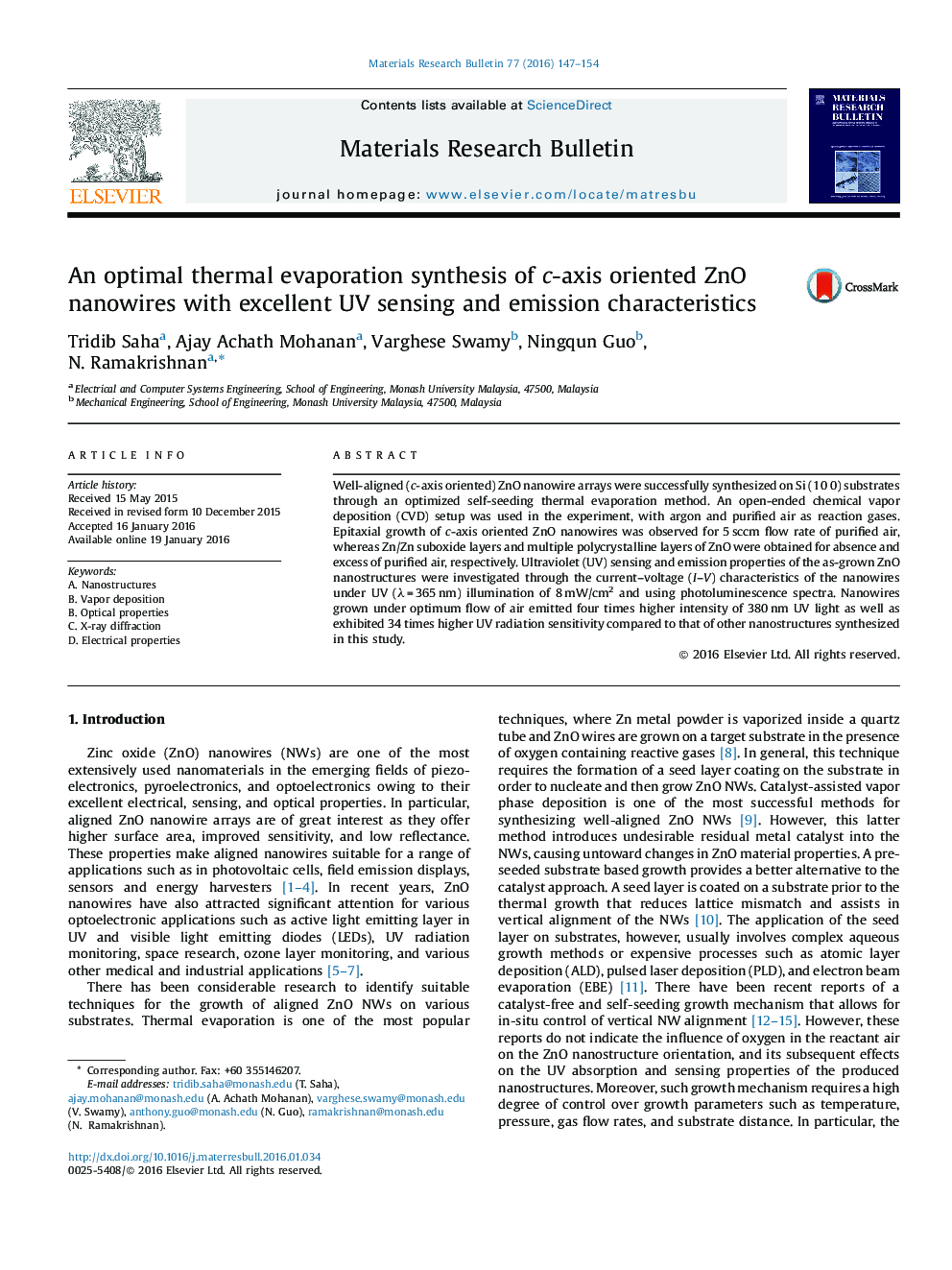| Article ID | Journal | Published Year | Pages | File Type |
|---|---|---|---|---|
| 1487440 | Materials Research Bulletin | 2016 | 8 Pages |
•c-Axis alignment of ZnO nanowires was optimized using self-seeding thermal evaporation method.•Influence of purified air on the morphology and optoelectronic properties were studied.•Nanowires grown under optimal conditions exhibit strong UV emission peak in PL spectrum.•Optimized growth condition establish nanowires of excellent UV sensing characteristics
Well-aligned (c-axis oriented) ZnO nanowire arrays were successfully synthesized on Si (1 0 0) substrates through an optimized self-seeding thermal evaporation method. An open-ended chemical vapor deposition (CVD) setup was used in the experiment, with argon and purified air as reaction gases. Epitaxial growth of c-axis oriented ZnO nanowires was observed for 5 sccm flow rate of purified air, whereas Zn/Zn suboxide layers and multiple polycrystalline layers of ZnO were obtained for absence and excess of purified air, respectively. Ultraviolet (UV) sensing and emission properties of the as-grown ZnO nanostructures were investigated through the current–voltage (I–V) characteristics of the nanowires under UV (λ = 365 nm) illumination of 8 mW/cm2 and using photoluminescence spectra. Nanowires grown under optimum flow of air emitted four times higher intensity of 380 nm UV light as well as exhibited 34 times higher UV radiation sensitivity compared to that of other nanostructures synthesized in this study.
Graphical abstractFigure optionsDownload full-size imageDownload as PowerPoint slide
